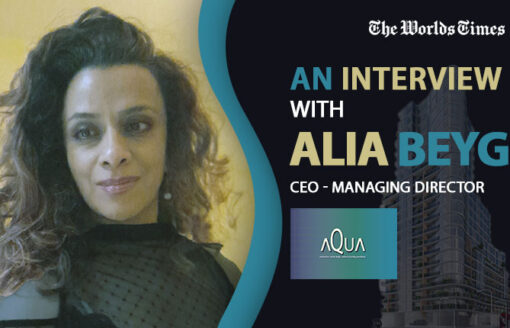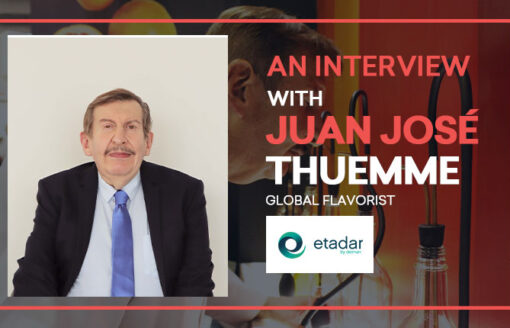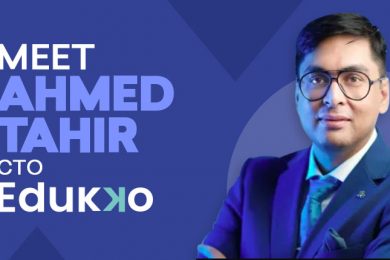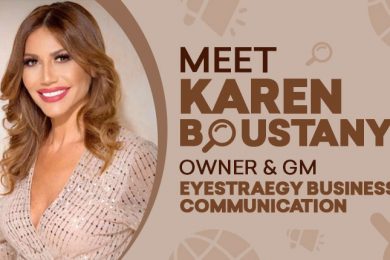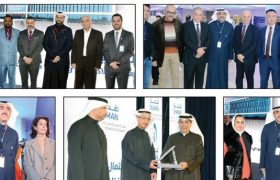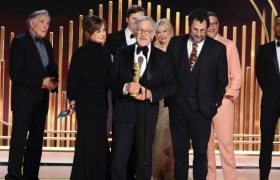Christer Windeløv’s Personal Life & Company’s Life
The Arabia Times: Explain your background and your company’s in detail.
Christer Windeløv-Lidzélius: My name is Christer Windeløv-Lidzelius and I am the CEO of Kaospilot. In addition, I hold professorships at Elisava School of Design and Technology in Barcelona and at Saint Paul Business School in São Paolo. I took my PhD at Tilburg University in The Netherlands, and my area of expertise lies in the intersection of strategy, innovation and leadership.
In addition, I am adviser for companies and organizations.
Kaospilot is a school but not a normal school. We are essentially a school and a business, offering fulltime programs, shorter programs for professionals and consulting for companies. We operate out of Denmark but have the world as our arena, providing our offerings from Australia to Canada and Dubai to Norway. Our expertise lies in areas of entrepreneurship, leadership development, experience design, educational design and sustainable business development.
About Kaospilot
The Arabia Times: What motivated you to take over “Kaospilot”?
Christer Windeløv-Lidzélius: I took over Kaospilot after the founder in 2006 as I recognized the potential of developing a new type of educational initiative that could inspire and drive educational reform – as well developing a new generation of leaders and entrepreneurs that will shape our future. I was drawn to the challenge and idea of service and the opportunity to make a difference.
The Arabia Times: Can you provide an example of a successful strategic initiative you’ve been a part of? What was your role and how did it contribute to the overall success?
Christer Windeløv-Lidzélius: Let me offer an example to this:
In our company we were restricted from growth in our home market and at the same time, we needed driving profit. After an analysis I could see that there was no way to get out of our situation by decreasing spending as it would have lessened our value proposition and pushed our key customer base away from us.
A dominant, key source of income for us had been customized consulting programs which had set us apart from competition as well as providing substantial fees per client. The foresight work I conducted suggested that competition would try to enter our lucrative area and indeed take market shares as they had certain capabilities we could not compete with. The question then was – what to do?
Taking one step back and looking at our business and ask some tough questions – who are we really, what are we great at and how do others see us – as opposed to our own self-image helped us realize that our opportunities lied in a very different area than we had focused on in the past. An area that our competitors would have a much harder time to copy.
Acting upon this realization required a new branding process moving – internally and externally – then create new offerings and then driving into the market.
As a leader one really must ensure one has the right people onboard. You may have the right intuition and insights, but the right people are key to help you reconfigure you’re thinking and views – as well as translating whatever you want to see happen into actionable initiatives as well as build support and making it happen. The leader is only as good as the team.
Future of Kaospilot
The Arabia Times: How do you approach formulating a long-term strategic plan for Kaospilot? What factors do you consider in the process?
Christer Windeløv-Lidzélius: For me the key aspect in strategy is less planning, than making. Strategy-making.
Strategy has come quite a way from the traditional strategic planning paradigm. We today have to act out in complexity and uncertainty. Things change rapidly – making it harder and indeed sometime futile to predict. That is the new strategy reality.
As such it is key create space where we acknowledge this reality and can deal with the paradoxes herein. What may be true in one area, may not be true in the next. In addition to this we need to drive strategic thinking and doing – not just planning – into our business units. Seeing strategy as something best worked at solely from the C-suite and board seminars is no more. It is of course important that top management is on top of this, but they need to involve broadly and understand that strategy-making requires more.
I think these volatile time suggest strategy to hone into first a purpose (why do we exist), a vision (what would really like to see come true), then consider values (what is important for us in this work and will guide our work), then create and re-create a through situational analysis (and be brutally honest here – and revisit it over and over again), then do tests when it comes to actual initiatives (learning from them is of course key) before committing more fully. A combination of exploration and exploitation if you want.
I am naturally drawn to the notion of asset-based thinking and opportunity-oriented-thinking. I think it simply easier to build strategy around what one is good at and what opportunities that can come to be – than the opposite. Normally when I work with companies and their strategies, that are quite good at figuring what can’t be done – and the help needed is more rooted in the idea of seeing what is possible and what to focus.
The Arabia Times: How do you see business industry is changing in two years, and how do you see yourself creating that change?
Christer Windeløv-Lidzélius: Overall, I think we will experience turmoil and disruption. Polarization seems to be on the rise, climate crises, increasing demands for innovation and efficiency and geopolitical drivers rewrite our business map. There will be a huge balancing act between different options and interests. Profitability at all costs will be a difficult value proposition for younger generations.
In terms of education, we will need new visions as to stand relevant and unique. Education is still perhaps the best investment one can make, but the value propositions need to be up to date or else one will become irrelevant. Why take an education in one place as opposed to another if knowledge is quantifiable and possible to distribute digitally?
For us we will continue to drive an agenda around creative and critical thinking, generating agency, vision, and drive, through our educational programs. We want to create world-citizens, world-makers in the making.
The Arabia Times: What steps do you take to identify and prioritize opportunities for innovation in a rapidly changing market?
Christer Windeløv-Lidzélius: There are many, but for me I think it starts with having a genuine curiosity. I have yet to meet a successful entrepreneur that is not curious about the world, their industry and particularly their clients, organization, people and offerings. There is something about the willingness and want to improve and excel. If this is not here, then whatever methodologies etc. you apply will not deliver for you.
I have what you call a two-folded compass. One’s focus on the changes in the world, one’s on the changes in my business.
One example would be changes in legislation which could change the rules of the game dramatically – for instance opening up for new competitors but also new markets we could act upon. Another concerns customer preferences – how do I know what drives the changes?
When it comes to my company, one example concerns areas that go really well. I ask my team to examine it critically to detect how come we experience this success, what do we do and what is different from before. Then I would ask then come up with ways to capitalize on this even further, as well what can be called the spill-over effect – how can this success drive positive change beyond its own area?
Christer Windeløv Lidzélius’ Journey
The Arabia Times: What was the path you took to get to where you are today?
Christer Windeløv-Lidzélius: My journey has both been vivid and less of a straight line. I have had managerial responsibility virtually since the start of my career. I took on my MBA as I could see I need to upskill and provide solidity to my business acumen. My PhD was rooted in my desired to learn more about how companies actually go about innovation – i.e., if innovation is so detrimental for companies, then how do they create strategies for it? I was quite surprised how – at the time – relatively few of the companies in my study had an innovation strategy that they could articulate.
My background is also steeped in music. No big accomplishments here, but still it has shaped me and how I think about creativity, creating the new, how one becomes a team and how one connects with the audience. One could that this side of me have fed my more professional side.
I have also been fortunate to meet great people that have impacted my thinking and doing from many parts of the world. All in all it leaves me today with an interest in complex problem solving for the benefit of the individual as well as the organization and society.
Fostering an Innovative Culture
The Arabia Times: How do you foster a culture of innovation within a team or company?
Christer Windeløv-Lidzélius: Innovation requires a number of things; maybe the most important is the willingness to take on the challenge. More than once over the years I have heard things like “yes we tried it but it did not work” or “oh, we are not creative or innovative” or “there is no opportunity for innovation here”. But innovation is not just about grandiose ideas or inventions that change the course of history – it is also an integral part of all organizations, simply a process for renewal, a way to stay in tune with what is needed now. If not, it is difficult for the company to continue to stay in business.
And even if you can find companies that have stayed more or less true to their origins – for instance I visit a small soya company in Japan that had existed more or less in the same way for 250 years – it is unlikely that it goes for larger segments of organizations. Innovation culture normally starts with recognizing this and then making it a priority.
Since most companies start with some sort of innovation – after all the business of the entrepreneur is innovation – and that original spark and creative juice can carry you onwards for quite some time. But people come and people go, process and technology changes, preferences changes. And as such, our notion of innovation and our ways to go about it need to change. The culture must be accepting of this and not resort to “this is how we always have gone about it and there is no need to change. Whereas it is helpful to develop internal innovation processes that work, on should always keep an eye out for opportunities to – if not change – at least experiment with other ways.
Since culture can be seen as “how things are done around here” it is also the leaders’ job to carefully examine what is that cost of this. Or said differently: What is we are not appreciating or valuating that could be of importance to us?
One advice is to ensure you have people onboard with the right values. Values are difficult to change. It is easier to cultivate performance rather than changing values.
One word of caution is that even if you as a leader do not steer or drive a culture of innovation – a culture of innovation will still come to be. It is just a culture of innovation that is not supportive of innovation.
Challenges
The Arabia Times: What have been the biggest challenges you’ve had to overcome during the journey of your leadership?
Christer Windeløv-Lidzélius: Situations of when I had to let people go, or when a company I was in charge of did not deliver the expected results have been difficult. Those situations may or may not be the leader’s fault, but it is certainly the leader’s responsibility. Sensible actions are the key.
I would like to draw our attention to another subject though, maybe not so intuitive but I think will an absolute must for a contemporary leadership compass: Adjusting our worldviews.
I think the question of how to stay in tune with the current reality is always a challenge. As leaders we find ways, methods, tools, and attitudes that serve us well – for a time. At one point though the world has changed, and our worldviews are not up to date. To anticipate this, to be on the forefront of what’s next is key to my leadership. And whereas I may be relatively good at it is like muscle. You need to train it and never assume you are in control. You wake up one day and the world is not the same. It is a due to the complexity of our times as well as our inclinations as people to see what we expect or want to see – not always what is.
Leadership Style & Its Impact on Team Success
The Arabia Times: How do you define your leadership style? Can you give an example of how you’ve applied this style to lead a team effectively?
Christer Windeløv-Lidzélius: I would call it a creative, distributed leadership style.
Basically, a leader has three jobs: Getting the job done, competence development and developing networks. Whereas the first point to deliver upon expectations the second two is really to make your company fit for future challenges. Maybe even challenges you do now even know about today.
Whereas this is a leadership role and responsibility, the leader is only one person. If more people – perhaps people without formal leadership responsibility can shoulder these tasks and opportunities, we will simply be more equipped to drive more and better results. Our company will be less vulnerable, faster to react to changes and act upon opportunities if the mission is shared and people are equipped to do so.
A key feature of the leader in such an organization is to provide the trust, the safety for people to take initiative and not become crippled by fear of making mistakes.
What is often forgotten when we empower people is think though what that effectively means. Often I meet leaders that say “I do not understand how this happened or why something did not happen – I granted them the opportunity to go about it in their own way and the result is simply so poor”. Empowerment is often assumed to result in better result, but it is not just the privilege to make decisions. It is about having the knowledge and skill to consider, thinking through to make sensible actions. As leaders we need to provide that as well, or else our empowerment efforts fall short and leave the organization possibly worse off.
Connect Christer Windeløv-Lidzélius on LinkedIn




